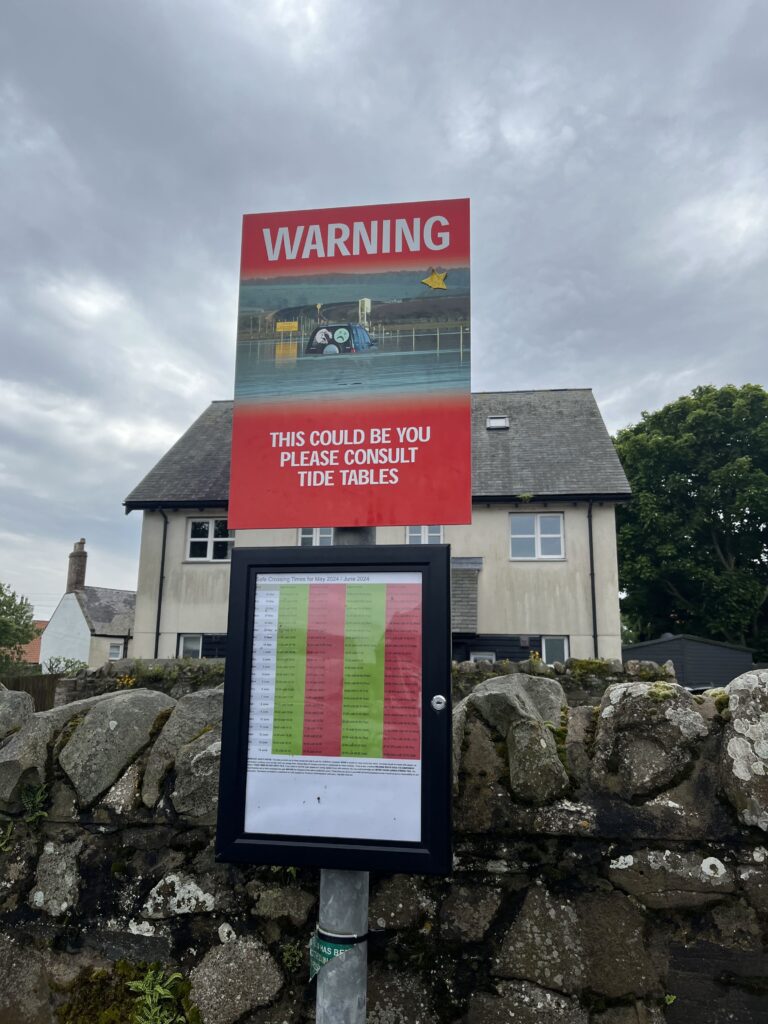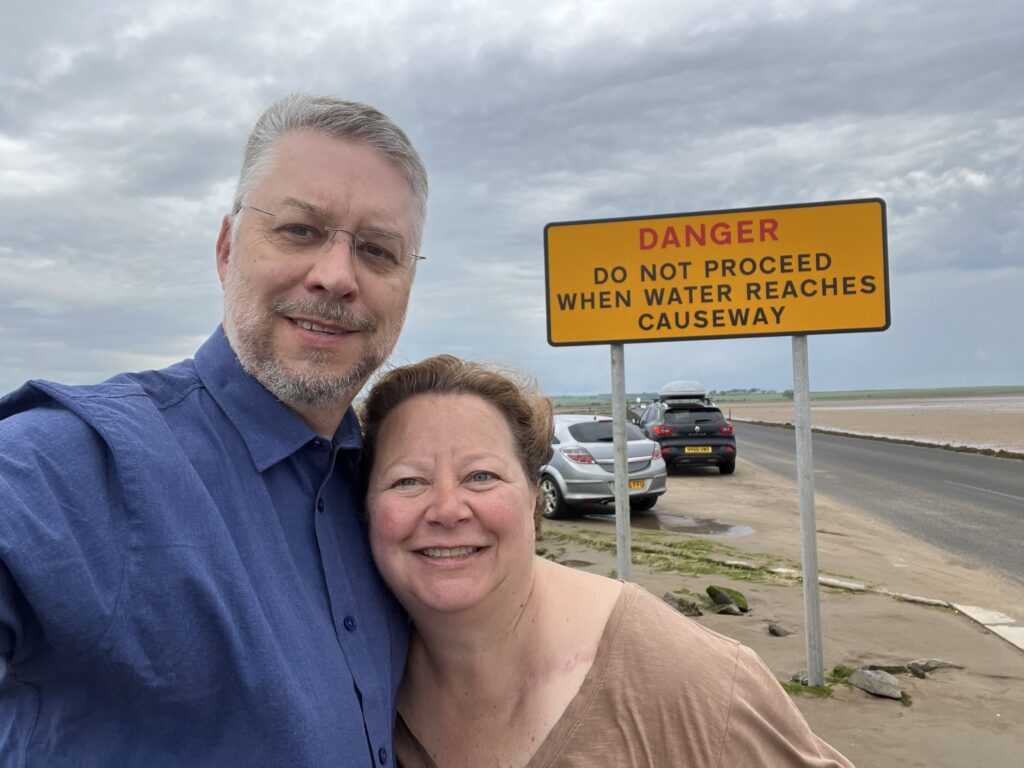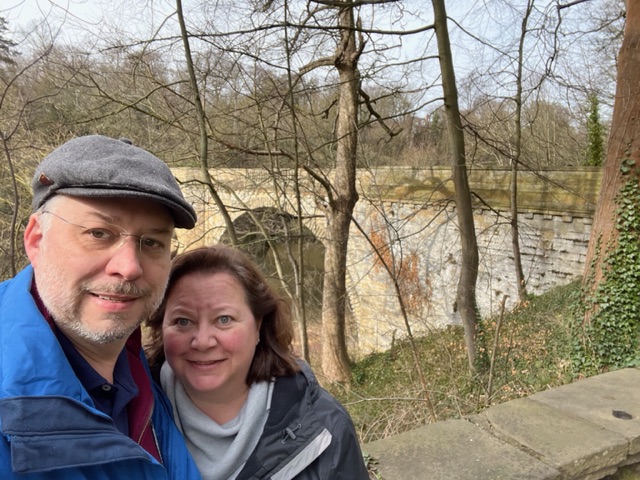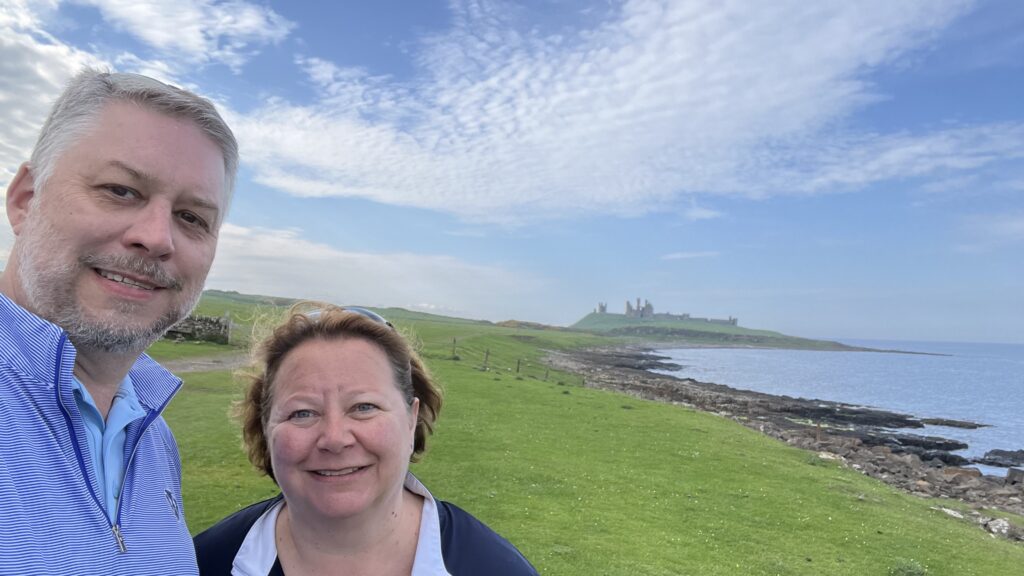
For the spring Bank Holiday (long weekend) we traveled with our friends, Clare and Pete, up to Northumbria, the region north of County Durham, renown for its beaches, castles, and other landmarks.
Along the way we stopped in the small village of Craster (population 305), which doesn’t have much to it other than a pub, a fish and chips shop, a harbor, and the ruins of Castle Dunstanburgh from the 14th century.
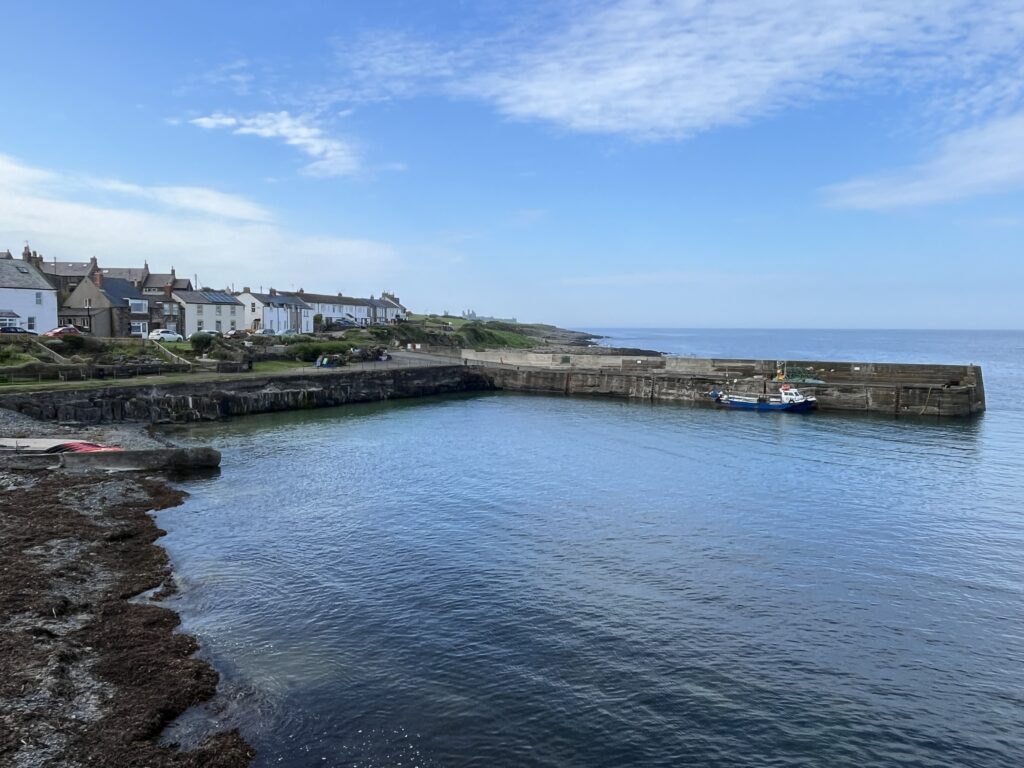
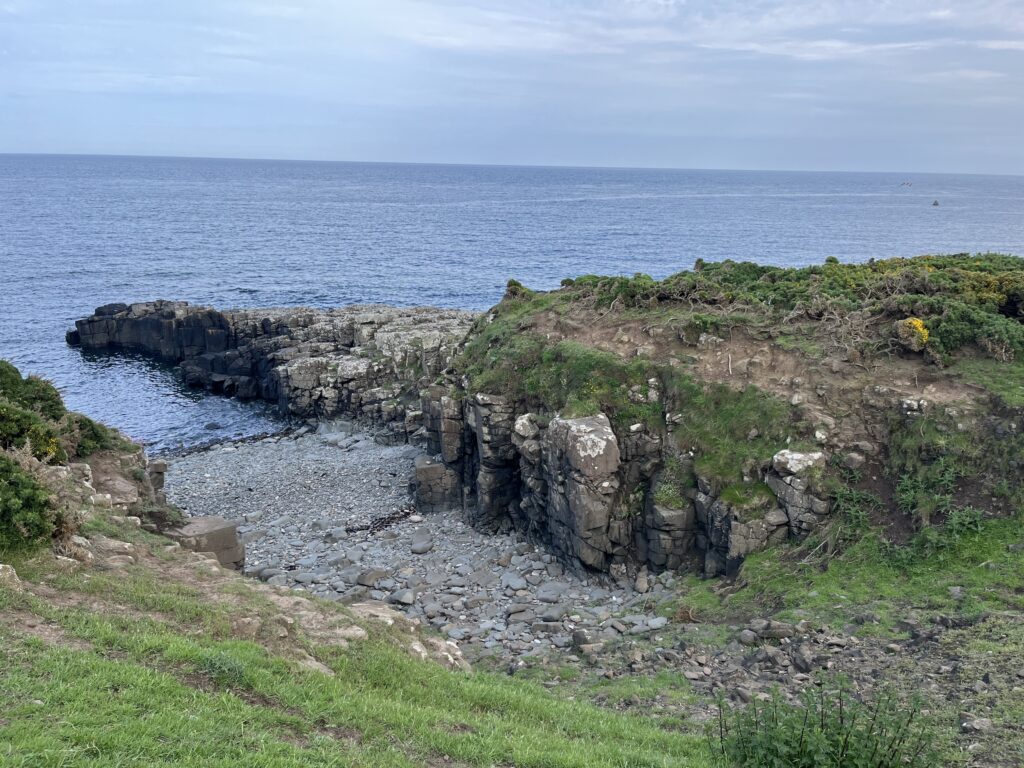
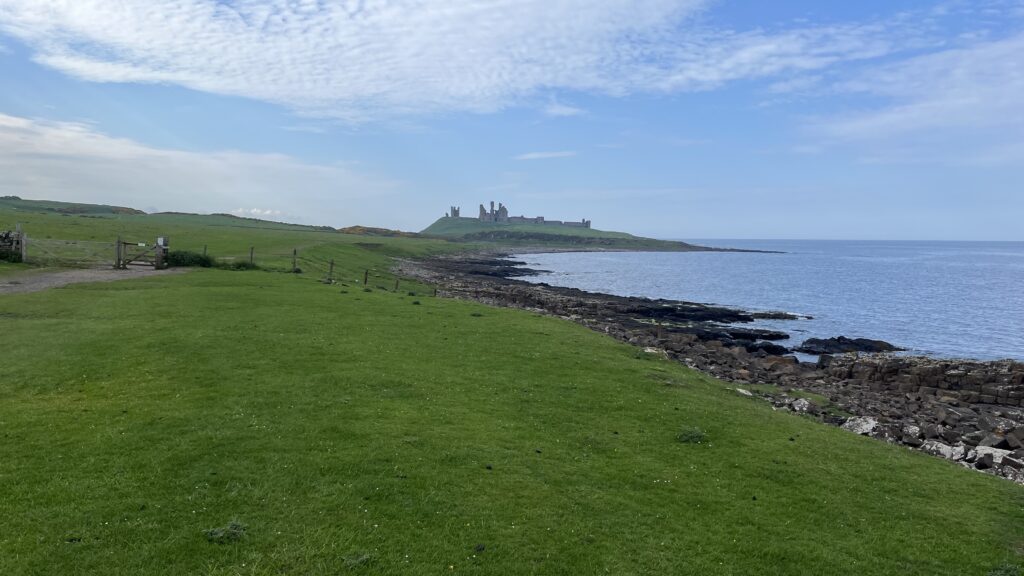
And as always, lots of sheep…..
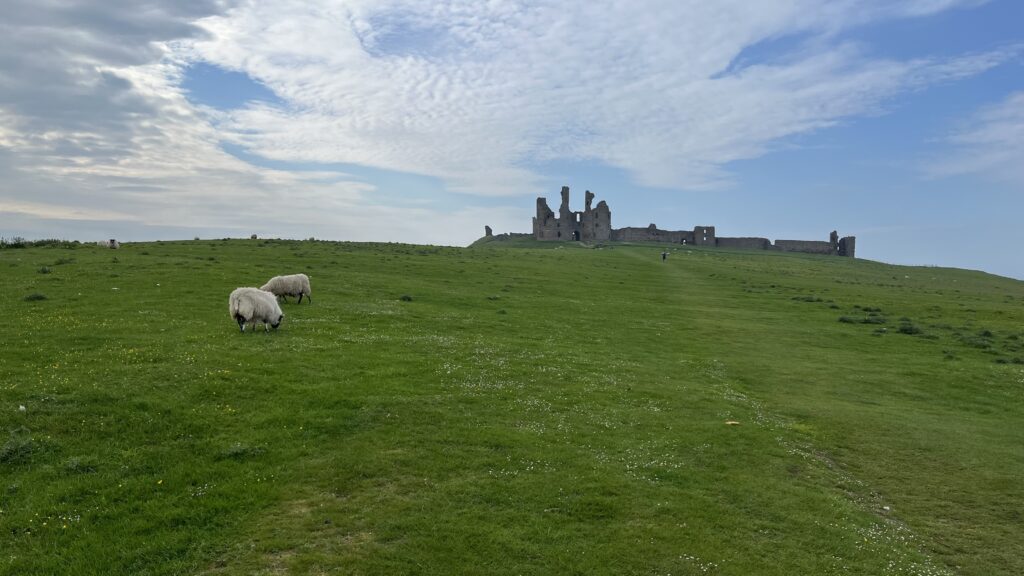
From there we travelled North to see Lindisfarne, also called Holy Island. The abbey was established here in 634 AD and plays an important role in the spread of Christianity in the North of England. This is where the famous Lindisfarne Gospels were produced around 715 AD.
It’s on an island that you can only reach by a causeway when the tide is out. No kidding around. Google Maps doesn’t know when the tide is out – the blue dot on the map is us crossing the causeway in a car!

It’s a small village with the ruins of the Priory and Abbey, as well as a 16th century Castle to which you can walk.

Lindisfarne Castle, off in the distance.
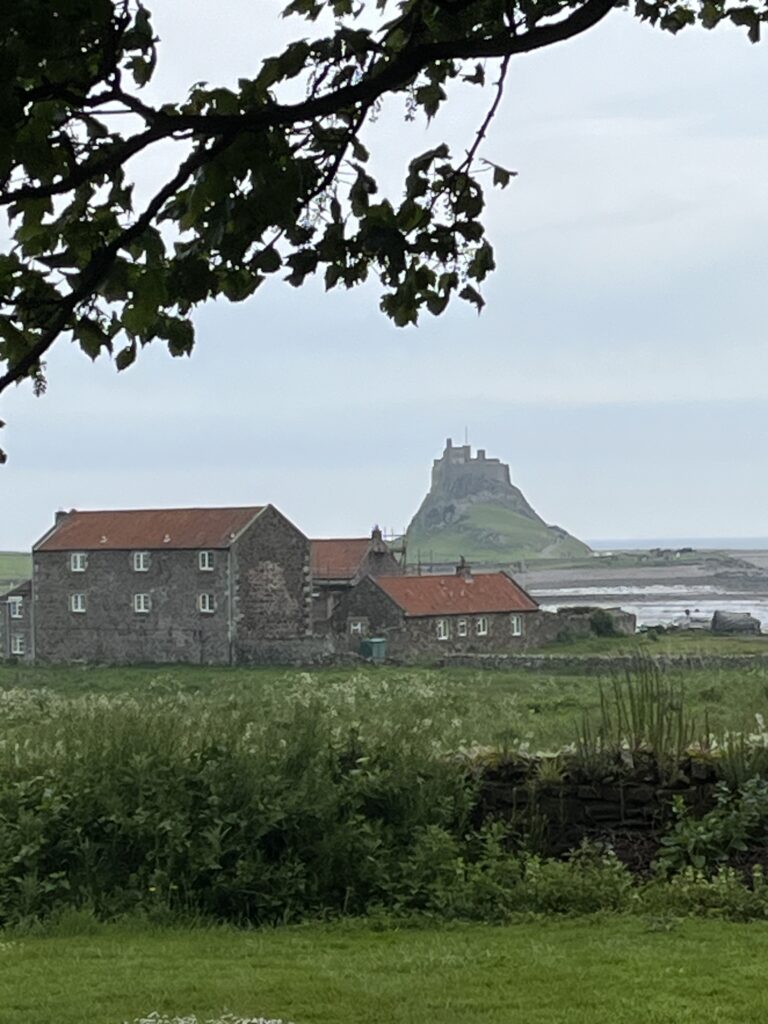
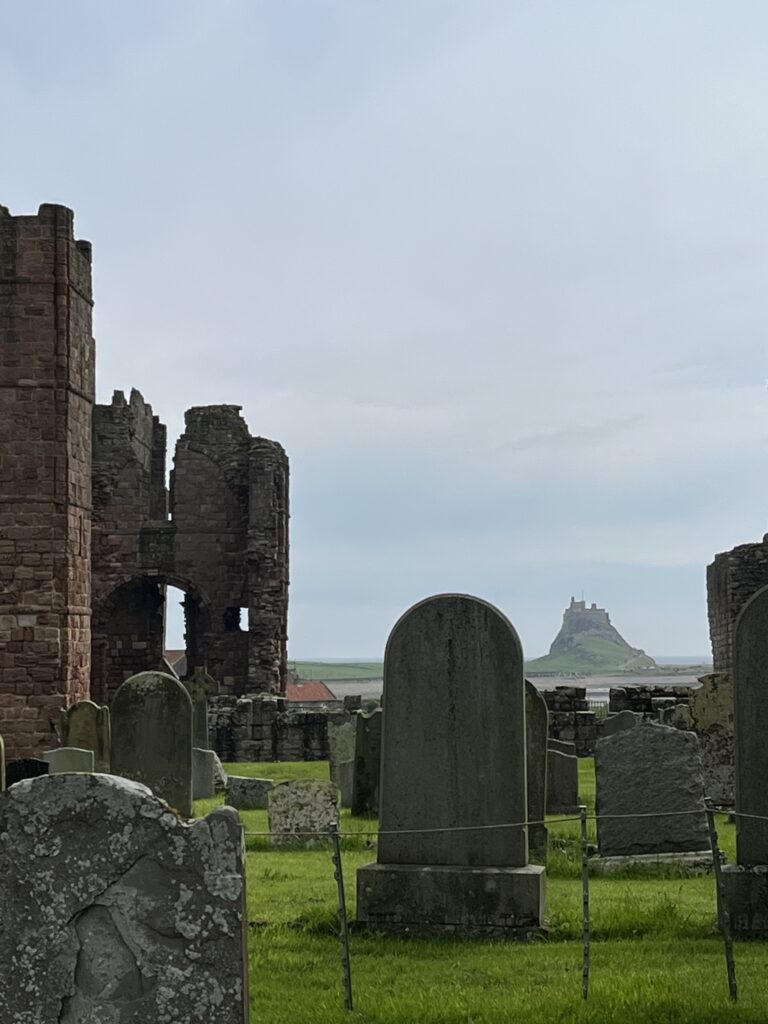
Below is Lindisfarne Castle (left) with Bamburgh Castle in the distance on the right (more picture of Bamburgh in a future post!).

The Village on Lindisfarne.
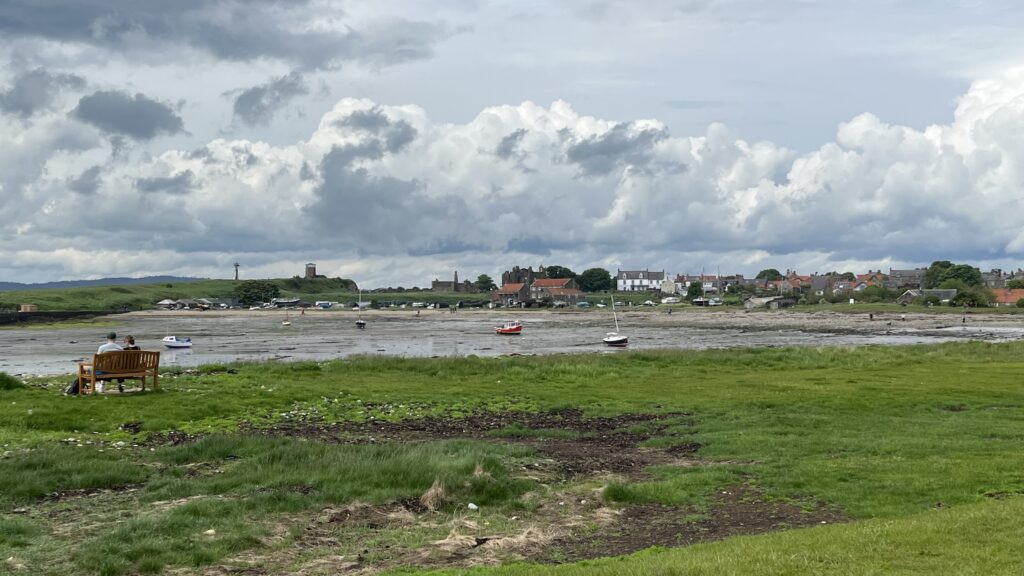
It’s a pretty steep walk all the way up to the Castle.
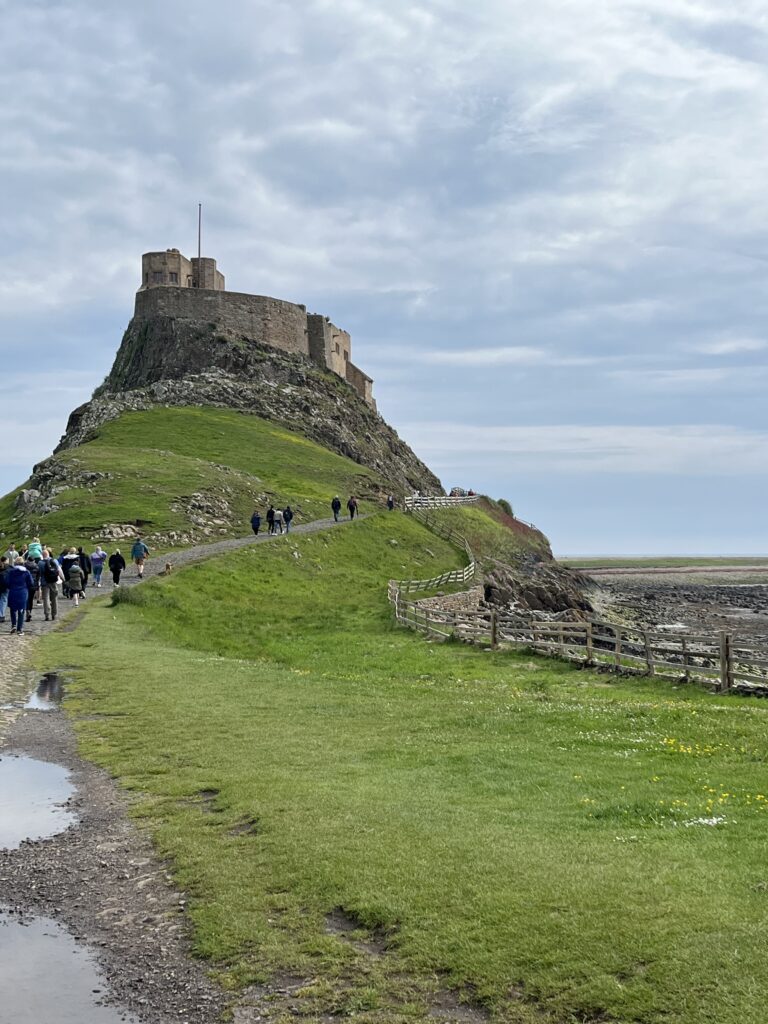
On the other side of the castle is a rocky beach which prompts many to build stone towers.
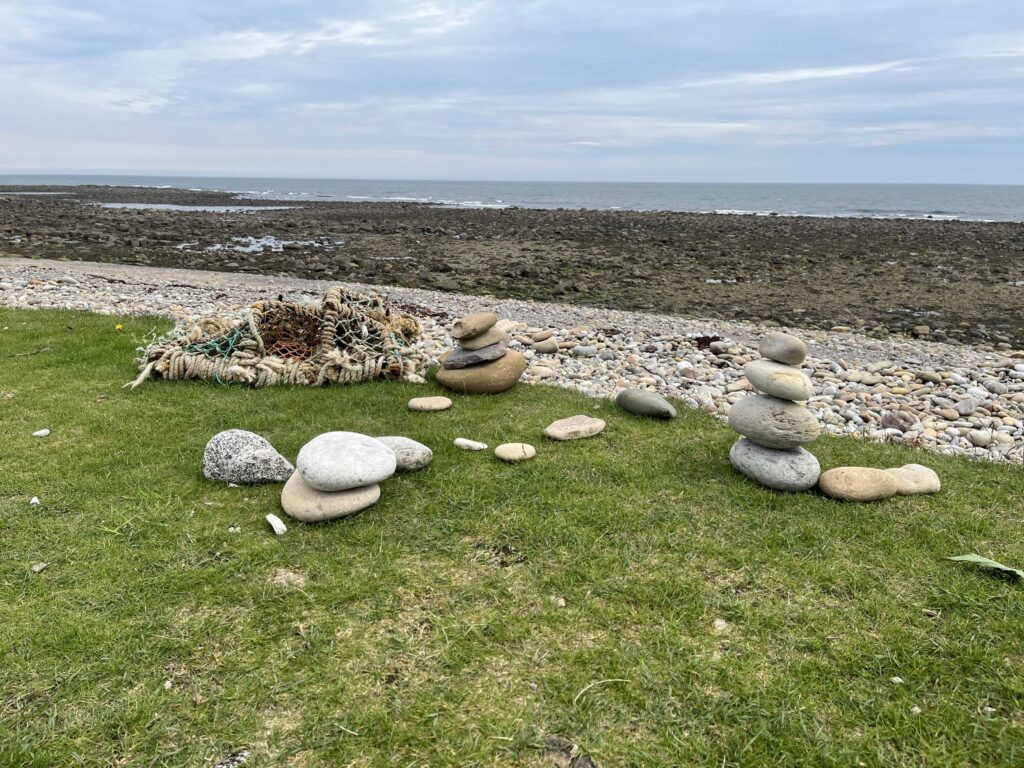
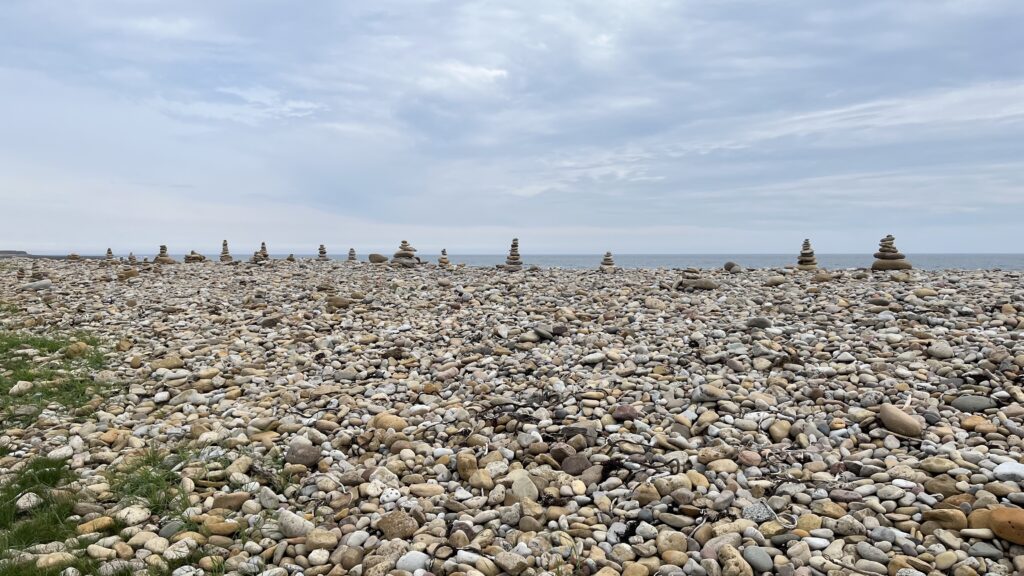
We gave it a go under Pete’s supervision!
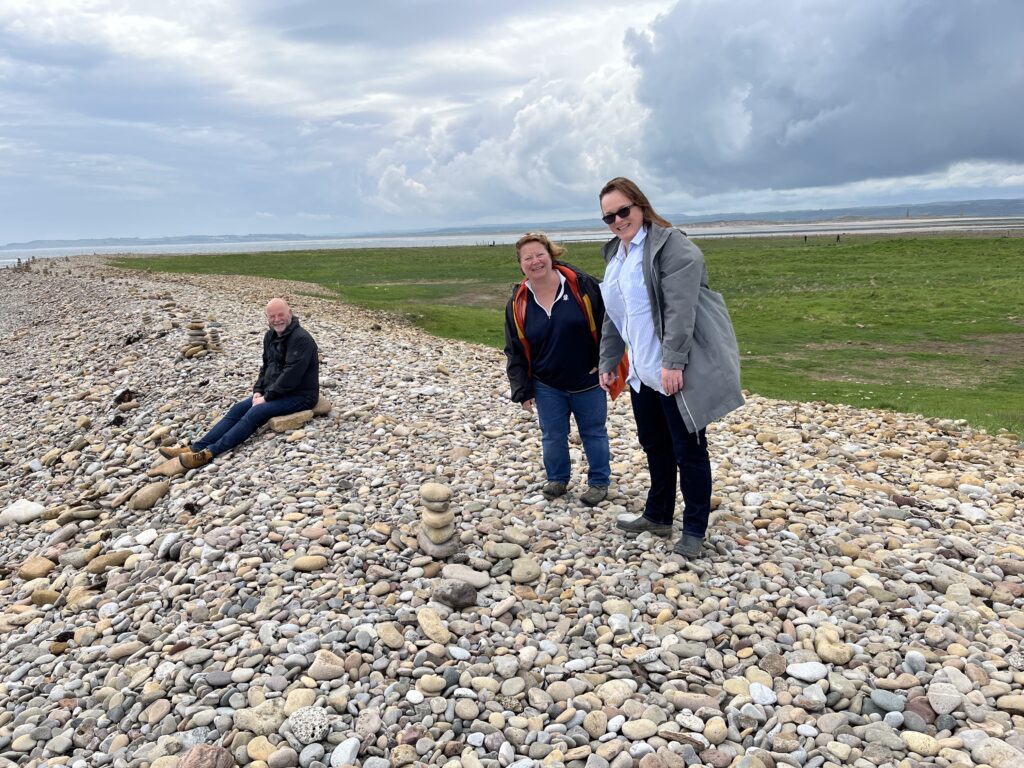
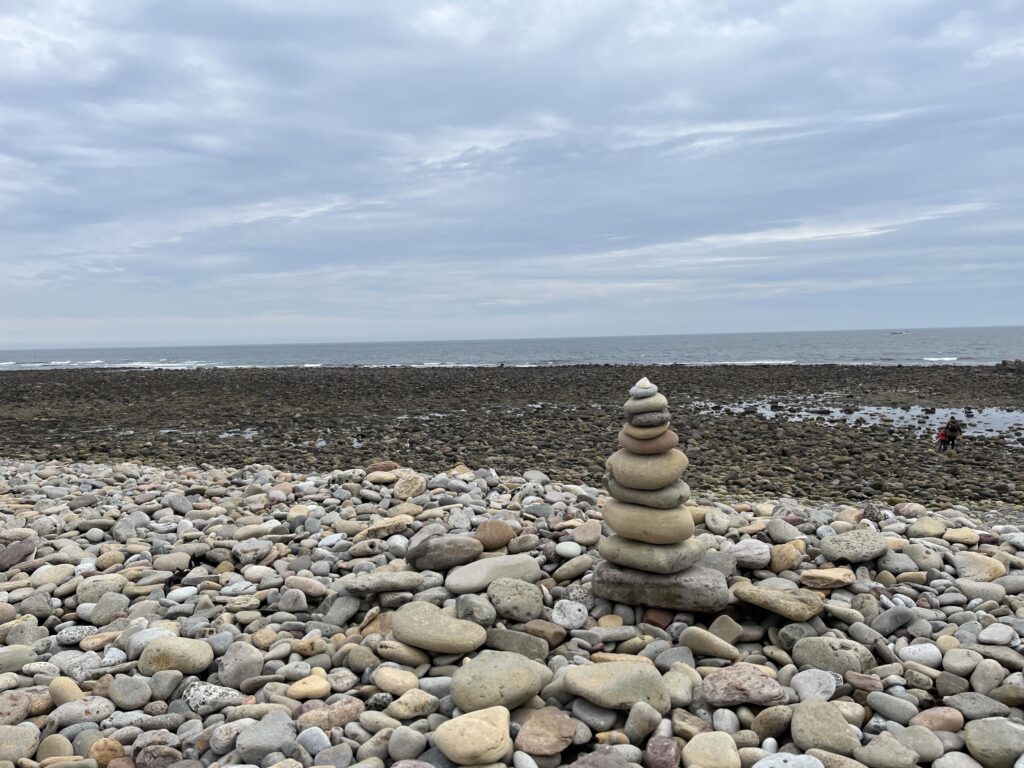
It’s a beautiful place, but watch the tides!
